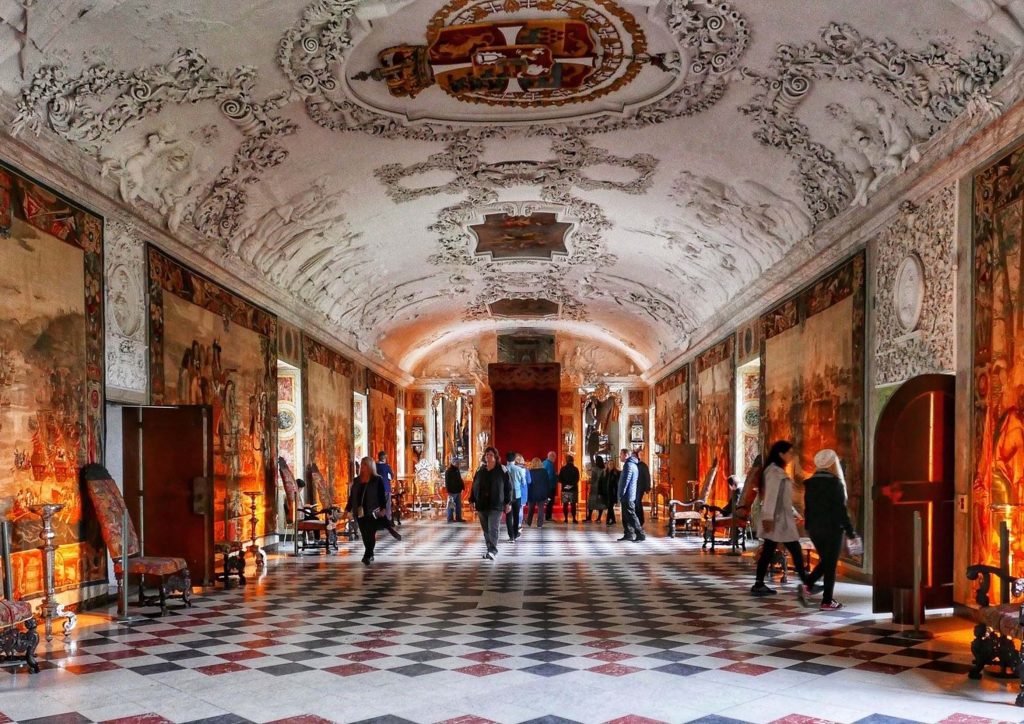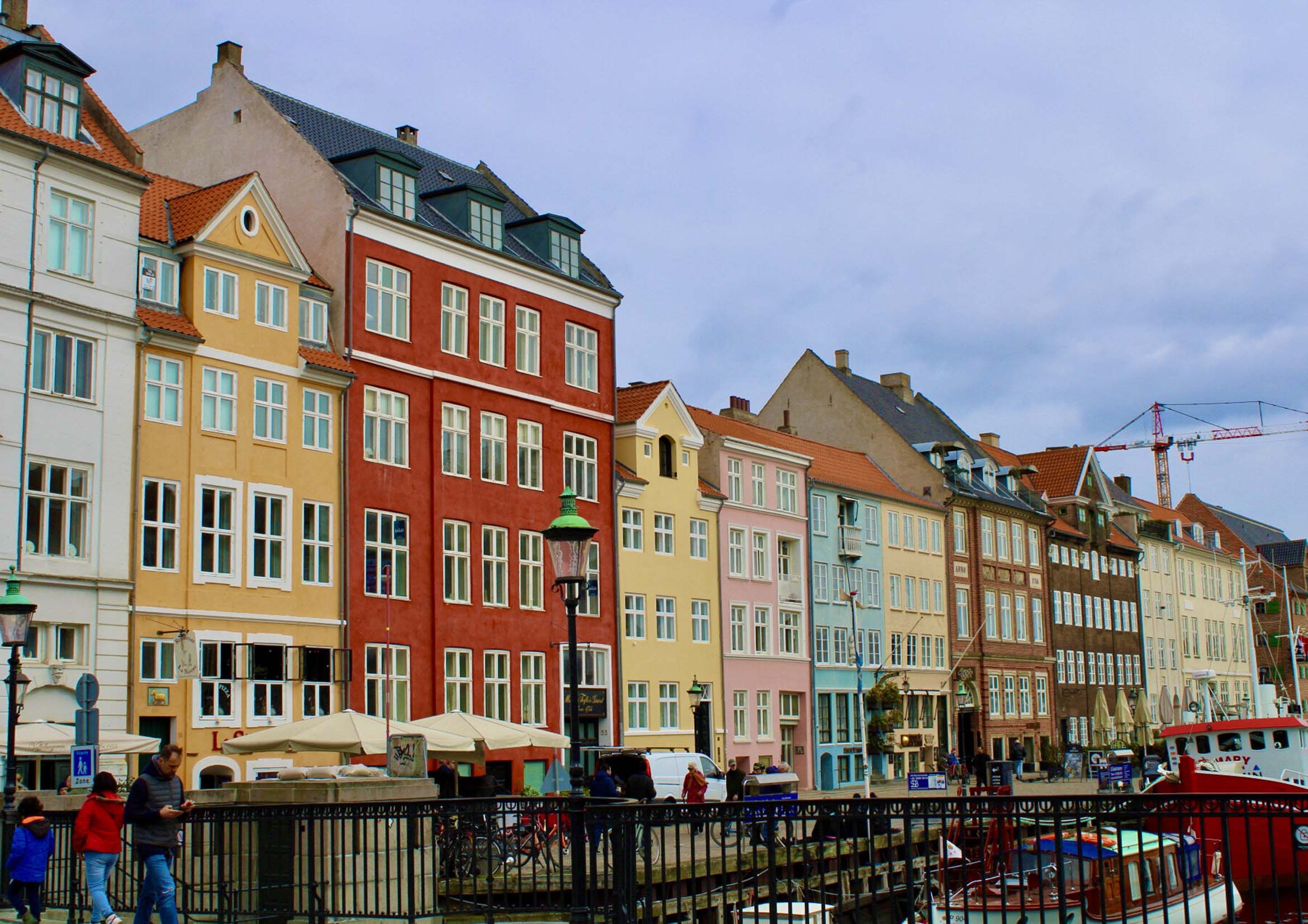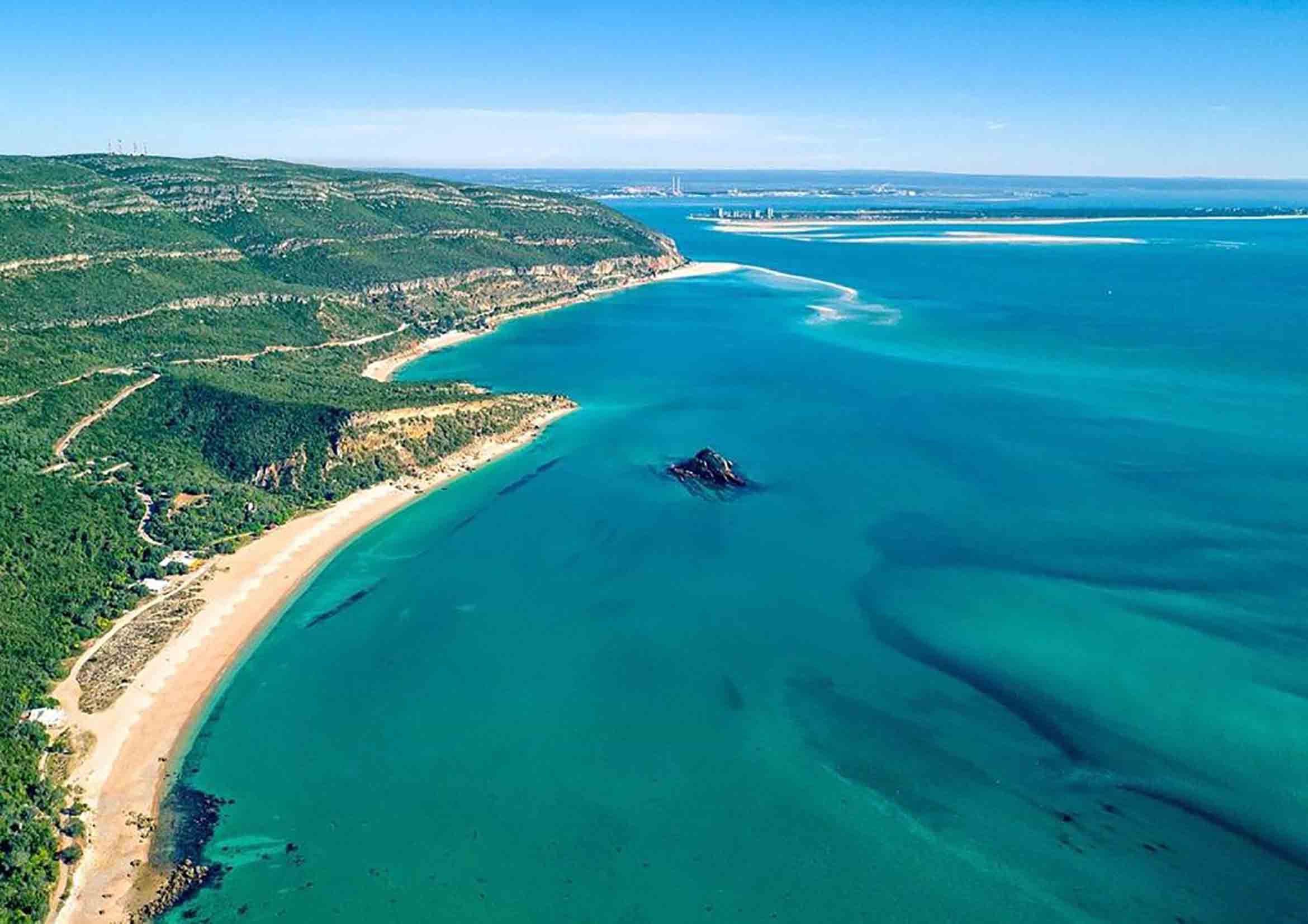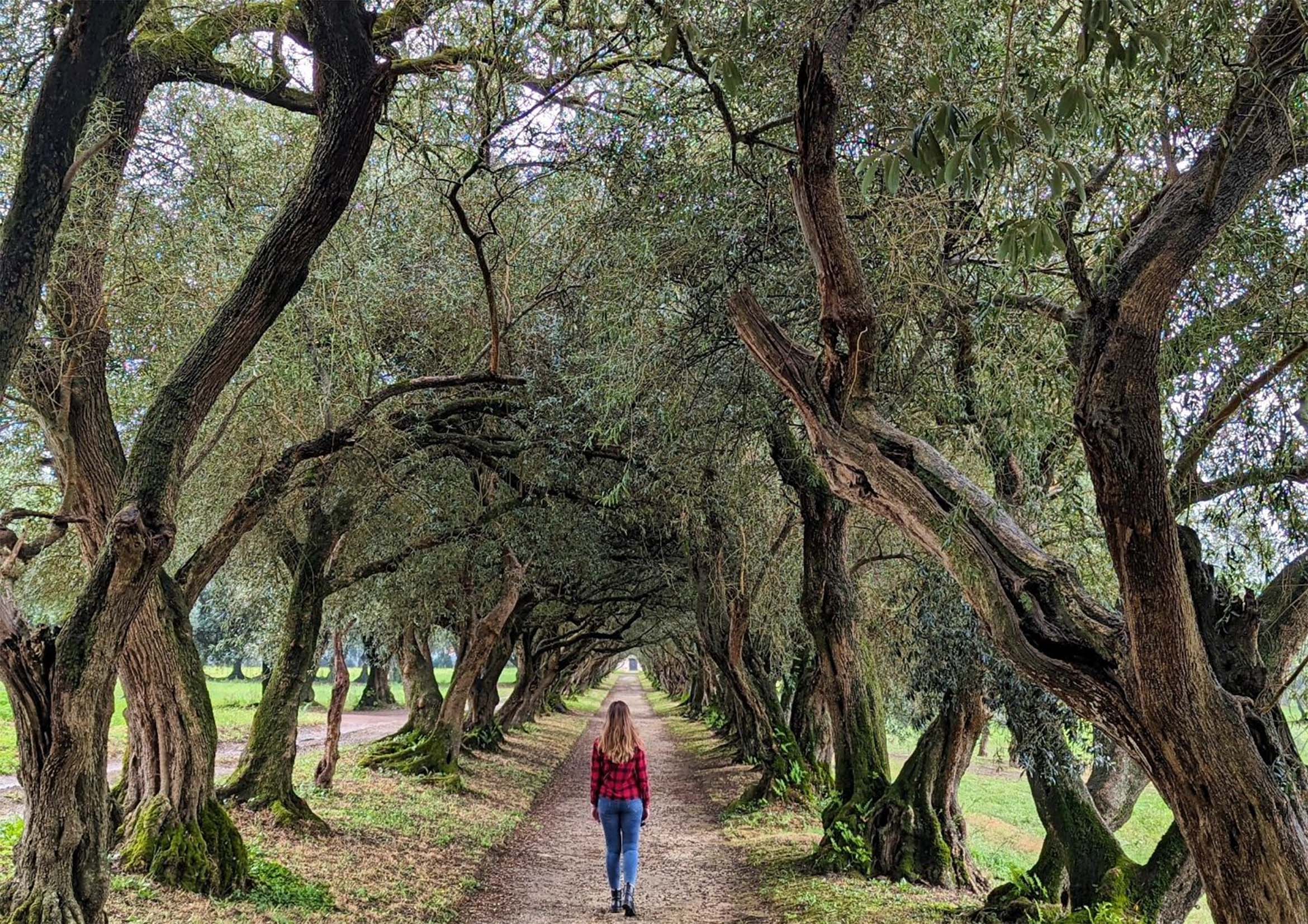Copenhagen, the vibrant capital of Denmark, is a city that seamlessly blends historic charm with modern innovation. Known for its colorful buildings, picturesque canals, and a robust cycling culture, Copenhagen offers a plethora of attractions that cater to a variety of interests.
In this blog, I’ll take you on a journey through some of the most iconic and fascinating spots in Copenhagen. From its rich history to its contemporary art scenes, there is something for everyone in this Scandinavian gem.
1. Nyhavn: A Stroll Through History and Beauty
Location and Getting There
Nyhavn, meaning “New Harbor,” is one of Copenhagen’s most iconic areas. Situated along the waterfront, Nyhavn stretches from Kongens Nytorv to the harbor front just south of the Royal Playhouse. The address is Nyhavn, 1051 Copenhagen K.
You can easily get to Nyhavn by various means of transportation:
– By Metro: Take the M1 or M2 line to Kongens Nytorv Station, which is a short walk away from Nyhavn.
– By Bus: Several bus lines stop near Nyhavn, including lines 1A, 26, and 350S.
– By Bike: As Copenhagen is a bike-friendly city, you can rent a bike and ride along the scenic streets to Nyhavn.
Ticket Prices and Discounts
Nyhavn itself is a public space and free to visit. However, many of the activities and eateries around it have associated costs. Canal tours, which start from Nyhavn, usually cost around 80-100 DKK for adults, with discounts available for children and seniors.
Personal Experience and Recommendations
Nyhavn is a feast for the senses. The vibrant colors of the buildings lining the canal, the lively atmosphere filled with the sounds of street musicians, and the tempting aromas from the numerous restaurants create an unforgettable experience.
I started my visit with a leisurely stroll along the harbor, taking in the historical wooden ships moored along the quay. The area is rich in history, having once been a bustling commercial port where ships from all over the world docked. Today, it’s a cultural hub, teeming with life and activity.
One of the highlights of my visit was a canal tour. These tours provide a unique perspective of Copenhagen, allowing you to see the city from its beautiful waterways. The guides are knowledgeable and provide fascinating insights into the history and architecture of the city. I highly recommend booking a canal tour through one of the many operators, such as DFDS Canal Tours, which offers tickets online and at various kiosks around Nyhavn.
After the canal tour, I decided to have lunch at one of the many restaurants that line the harbor. Nyhavn 17 is a fantastic choice, known for its traditional Danish cuisine and charming ambiance. I enjoyed a delicious plate of smørrebrød (open-faced sandwiches) while watching the world go by. Prices here are moderate, with a typical meal costing around 150-200 DKK.
For dessert, I couldn’t resist stopping by Rajissimo, a popular ice cream shop. Their homemade gelato and freshly made waffles are a treat you shouldn’t miss.
Rating
Nyhavn is a must-visit destination in Copenhagen. Whether you’re interested in history, photography, or simply enjoying good food in a beautiful setting, Nyhavn has something to offer. The area is incredibly photogenic, making it perfect for capturing memories of your trip.
Recommendation Index: 5/5
2. Tivoli Gardens: A Fairy Tale Amusement Park

Location and Getting There
Tivoli Gardens is located in the heart of Copenhagen, just a stone’s throw from the central train station. The address is Vesterbrogade 3, 1630 Copenhagen V.
– By Train: The park is right next to Copenhagen Central Station (Københavns Hovedbanegård), making it extremely accessible.
– By Metro: The nearest metro station is Rådhuspladsen, just a short walk away.
– By Bus: Several bus lines, including 2A, 5C, and 9A, stop near Tivoli Gardens.
– By Bike: Biking is another convenient option, with ample bike parking available.
Ticket Prices and Discounts
Entry tickets to Tivoli Gardens vary depending on the season and events. Typically, an adult ticket costs around 135 DKK, while children’s tickets (ages 3-7) are about 60 DKK. Ride tickets can be purchased individually or as an unlimited ride pass for approximately 230 DKK. Tivoli also offers a variety of seasonal passes and discounts for groups, students, and seniors.
Personal Experience and Recommendations
Walking into Tivoli Gardens feels like stepping into a fairy tale. Opened in 1843, Tivoli is one of the oldest amusement parks in the world, yet it retains a timeless charm that captivates visitors of all ages.
I visited Tivoli in the summer, a time when the gardens are in full bloom, and the park is bustling with activity. The combination of lush greenery, enchanting architecture, and the gentle sounds of music creates a magical atmosphere.
One of the first attractions I tried was the iconic wooden roller coaster, Rutschebanen, built in 1914. This ride offers a delightful mix of thrills and nostalgia, with its scenic views and gentle dips. For more adventurous souls, the Vertigo ride is a must-try, delivering heart-pounding excitement as it spins and twists at high speeds.
Tivoli Gardens isn’t just about rides; it also offers a wealth of cultural experiences. I attended a performance at the Pantomime Theatre, an open-air venue where traditional pantomime and ballet are performed. The whimsical shows, with their elaborate costumes and expressive acting, were a highlight of my visit.
For dining, Tivoli offers a wide range of options, from gourmet restaurants to casual eateries. I chose to dine at Nimb Brasserie, known for its exquisite French-inspired cuisine. The meal was superb, with dishes beautifully presented and rich in flavor. The average cost for a meal at Nimb Brasserie is around 300-400 DKK per person, but the experience is well worth the price.
In the evening, Tivoli transforms into a wonderland of lights. Thousands of twinkling bulbs illuminate the park, creating a magical ambiance. I ended my visit with a stroll through the gardens, enjoying the serene beauty and the spectacular fireworks display that lights up the night sky.
Rating
Tivoli Gardens is more than just an amusement park; it’s a cultural treasure that offers a unique blend of thrills, relaxation, and entertainment. Whether you’re a thrill-seeker, a culture enthusiast, or simply looking for a beautiful place to unwind, Tivoli has something for everyone.
Recommendation Index: 5/5
3. The Little Mermaid: Copenhagen’s Iconic Symbol
Location and Getting There
The Little Mermaid statue is located at Langelinie Promenade, a picturesque waterfront area. The address is Langelinie, 2100 Copenhagen Ø.
– By Train: The nearest train station is Østerport, from where it’s about a 15-minute walk to the statue.
– By Bus: Bus lines 26 and 27 stop close to Langelinie.
– By Bike: The area is easily accessible by bike, with designated bike paths leading directly to the site.
Ticket Prices and Discounts
The Little Mermaid statue is situated in a public space and is free to visit.
Personal Experience and Recommendations
The Little Mermaid, inspired by Hans Christian Andersen’s famous fairy tale, is one of Copenhagen’s most beloved landmarks. Though relatively small, this bronze statue holds a significant place in the hearts of both locals and tourists.
My visit to The Little Mermaid was on a sunny afternoon, perfect for a leisurely walk along Langelinie Promenade. As I approached the statue, I could see a crowd of visitors gathered around, each eager to capture a photo with the iconic figure.
The statue itself is a beautifully crafted piece of art. Created by sculptor Edvard Eriksen in 1913, it depicts a mermaid sitting on a rock, gazing longingly towards the shore. The serene expression on her face and the graceful lines of her form evoke the melancholy of Andersen’s story.
While the statue is often busy with tourists, the surrounding area is peaceful and scenic. I spent some time walking along the promenade, enjoying the views of the harbor and the occasional passing ship. There are several benches where you can sit and take in the atmosphere, as well as nearby cafes where you can grab a drink or a snack.
One of the highlights of my visit was the opportunity to learn more about the history and significance of The Little Mermaid. There are informational plaques in the area that provide insights into the story behind the statue and its cultural importance.
For those interested in exploring further, the nearby Kastellet, a well-preserved star-shaped fortress, is worth a visit. It’s just a short walk from The Little Mermaid and offers beautiful gardens, historic buildings, and panoramic views of the city.
Rating
The Little Mermaid is a must-see for anyone visiting Copenhagen. While it may not be the largest or most elaborate attraction, it embodies the charm and fairy tale magic that Denmark is known for. The statue’s location along the waterfront also makes for a pleasant and scenic outing.
Recommendation Index: 4/5
4. Rosenborg Castle: A Royal Adventure

Location and Getting There
Rosenborg Castle is located in the center of Copenhagen, within the beautiful King’s Garden (Kongens Have). The address is Øster Voldgade 4A, 1350 Copenhagen K.
– By Metro: The closest metro station is Nørreport , about a 10-minute walk from the castle.
– By Bus: Bus lines 14, 42, and 43 stop near Nørreport Station, making it convenient to reach Rosenborg Castle.
– By Bike: Cycling is a popular way to explore Copenhagen, and there are bike racks available near the castle entrance.
Ticket Prices and Discounts
Entry to Rosenborg Castle costs approximately 130 DKK for adults. There are discounts available for students, seniors, and children. The ticket includes access to the castle interiors, including the royal apartments and the crown jewels exhibition.
Personal Experience and Recommendations
Rosenborg Castle offers a fascinating glimpse into Denmark’s royal history. Built in the early 17th century by King Christian IV, the castle served as a royal residence until the late 18th century. Today, it stands as a well-preserved example of Renaissance architecture and houses a remarkable collection of royal artifacts.
I arrived at Rosenborg Castle on a sunny morning and was immediately struck by its impressive exterior. The castle is surrounded by lush gardens, which were in full bloom during my visit. The King’s Garden itself is a delightful oasis in the heart of the city, perfect for a leisurely stroll before or after exploring the castle.
Inside Rosenborg Castle, I embarked on a self-guided tour of the royal apartments. The interiors are beautifully decorated with period furnishings, tapestries, and intricate woodwork. Each room offers a glimpse into the opulent lifestyle of Denmark’s royalty, with highlights including the King’s Study, the Knight’s Hall, and the Queen’s Chamber.
One of the highlights of my visit was seeing the crown jewels housed in the castle’s basement. The collection includes priceless treasures such as crowns, scepters, and ceremonial swords, all adorned with diamonds, pearls, and other precious gemstones. The craftsmanship and historical significance of these artifacts are truly awe-inspiring.
After exploring the castle, I spent some time wandering through the gardens and relaxing by the tranquil ponds. The King’s Garden is meticulously maintained and offers plenty of benches where you can sit and enjoy the surroundings.
For those interested in history and architecture, Rosenborg Castle is a must-visit. The combination of its beautiful gardens, well-preserved interiors, and priceless artifacts make it a cultural gem in Copenhagen.
Rating
Rosenborg Castle exceeded my expectations with its rich history, stunning architecture, and impressive collections. Whether you’re a history buff, a royal enthusiast, or simply looking to immerse yourself in Copenhagen’s past, Rosenborg Castle offers an unforgettable experience.
Recommendation Index: 5/5
5. Christiansborg Palace: Discovering Denmark’s Political Heart
Location and Getting There
Christiansborg Palace is located on the small island of Slotsholmen in central Copenhagen. The address is Prins Jørgens Gård 1, 1218 Copenhagen K.
– By Metro: Take the M1 or M2 line to Kongens Nytorv Station, then walk across the Inderhavnsbroen bridge to Slotsholmen.
– By Bus: Bus lines 2A, 66, and 350S stop near Christiansborg Palace.
– By Bike: Cycling is a convenient option, with bike lanes leading to Slotsholmen and bike racks available nearby.
Ticket Prices and Discounts
Entry to Christiansborg Palace is free, but there are fees for specific attractions such as the Royal Reception Rooms and the Tower. A combined ticket for both attractions costs approximately 160 DKK for adults, with discounts available for students and seniors.
Personal Experience and Recommendations
Christiansborg Palace is not just a royal residence but also the seat of the Danish Parliament (Folketinget) and the Prime Minister’s Office. As such, it holds a unique position as the political heart of Denmark.
My visit to Christiansborg Palace began with a tour of the Royal Reception Rooms, which are used for official ceremonies and state functions. The rooms are grand and exquisitely decorated, showcasing Danish craftsmanship and design. Highlights include the Queen’s Tapestry Chamber, adorned with intricate tapestries depicting Danish history, and the Great Hall, where royal banquets are held.
After exploring the reception rooms, I made my way to the Christiansborg Tower, which offers panoramic views of Copenhagen. The tower stands 106 meters tall and is the highest point in the city center. The ascent to the top is via a series of elevators and stairs, culminating in a breathtaking vista of Copenhagen’s skyline, including landmarks such as Tivoli Gardens, the Marble Church, and the Øresund Bridge.
For lunch, I dined at one of the cafes located within Christiansborg Palace. The Parliament Kitchen (Folketingets Spisehus) offers a range of Danish dishes and international cuisine in a relaxed setting. I enjoyed a traditional smørrebrød platter accompanied by a refreshing glass of Danish beer.
Christiansborg Palace also houses the Royal Stables, which are open to the public and showcase the palace’s collection of historic carriages and ceremonial harnesses. The stables provide insight into Denmark’s equestrian tradition and its role in royal ceremonies.
Christiansborg Palace is a must-visit for anyone interested in politics, history, and architecture. The combination of its royal heritage, political significance, and stunning views makes it a standout attraction in Copenhagen.
Rating
Christiansborg Palace offers a fascinating glimpse into Denmark’s past and present. Whether you’re exploring its regal interiors, ascending its tower for panoramic views, or learning about Danish politics, Christiansborg Palace is a captivating destination.
Recommendation Index: 4/5
6. The National Museum of Denmark: Unveiling Denmark’s Rich Heritage

Location and Getting There
The National Museum of Denmark is located at Ny Vestergade 10, 1471 Copenhagen K, in the heart of Copenhagen’s historic district.
– By Metro: The nearest metro station is Nørreport, from where it’s about a 10-minute walk to the museum.
– By Bus: Bus lines 5A, 6A, and 14 stop near Nørreport Station, making it convenient to reach the museum.
– By Bike: Cycling is a popular mode of transportation in Copenhagen, and bike racks are available near the museum.
Ticket Prices and Discounts
Entry to the National Museum of Denmark is free for permanent exhibitions. Special exhibitions may have an admission fee, typically around 100-150 DKK for adults. Discounts are available for students, seniors, and children.
Personal Experience and Recommendations
The National Museum of Denmark is a treasure trove of Danish history and culture, spanning millennia from the Stone Age to the present day. It houses extensive collections of artifacts, including prehistoric tools, Viking weaponry, medieval religious art, and modern Danish design.
My visit to the museum began with the Prehistory exhibition, where I explored reconstructions of Stone Age settlements and Bronze Age burials. The exhibits are meticulously curated, providing insight into the daily lives, rituals, and technological advancements of Denmark’s early inhabitants.
One of the highlights of the museum is the Viking Age section, which features impressive displays of Viking ships, weapons, and everyday objects. The centerpiece is the famous Sun Chariot, a Bronze Age artifact depicting a horse-drawn sun disk, symbolizing the cycle of the sun and seasons.
Moving through the Middle Ages and Renaissance galleries, I marveled at the collection of medieval art and artifacts, including illuminated manuscripts, religious sculptures, and ornate furniture. The museum’s Renaissance hall showcases the opulence and cultural exchange of the era through tapestries, ceramics, and paintings.
For lunch, I visited the museum’s café, which offers a selection of Danish specialties and international dishes. The atmosphere is relaxed, with indoor and outdoor seating options overlooking the museum’s courtyard.
Before leaving, I explored the Modern Danish Design section, which highlights iconic pieces of furniture, ceramics, and textiles from the 20th century to the present. The minimalist aesthetic and functional design principles of Danish designers such as Arne Jacobsen and Hans J. Wegner are celebrated here.
Overall, the National Museum of Denmark offers a comprehensive journey through Danish history, art, and culture. Whether you’re a history enthusiast, art lover, or simply curious about Denmark’s past, the museum provides a captivating and educational experience.
Rating
The National Museum of Denmark is a must-visit for anyone interested in exploring the rich heritage of Denmark. The depth of its collections, the quality of its exhibits, and its central location in Copenhagen make it an essential stop for cultural enthusiasts.
Recommendation Index: 5/5




